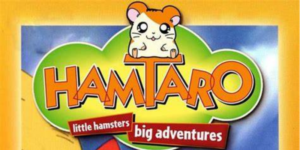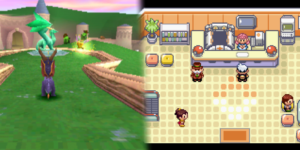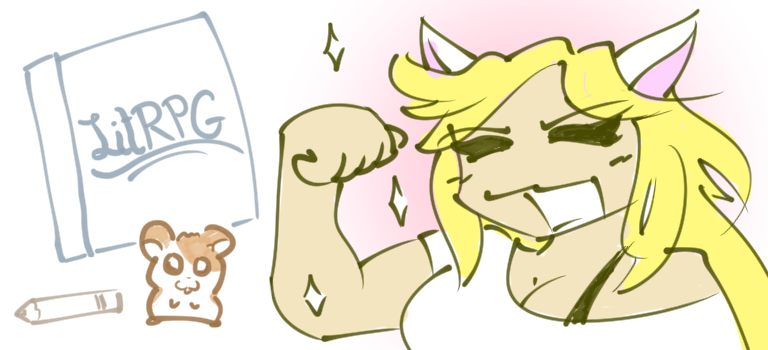I’m striving to create a world that’s small but rich with hidden secrets. We don’t always have to save the world!
I’m currently writing Catgirl System, a LitRPG about basically what it sounds like. She’s a cat. She’s a girl. And while there have been many amazing stories about unexpected heroes saving or conquering planets (ex. this one story about a rock), I went into my project knowing I didn’t want to do that.
Why? Well, there’s something cozy about a small scope, and “coziness” is one of the main concepts I’ve been toying with, hoping to capture.
I had many, many points of inspiration. Stories I loved, stories I didn’t-really-love-but-I-loved-one-concept-from, places in my life that left me with fond memories.
I’ll back up a little. Catgirl System is about a cat who finds herself in an unfamiliar, magic-tinged forest. Her first task—which, for all she knows, may be the only task—is to go forth and explore. Not the whole world, just this slice of it.
Of course she’ll run into setbacks and frustrations, but the world around her is blissful and serene. I mean, it is for the stretches between horrible animal attacks, but yeah, you get me.
For the most part, she is a little cute cat in a little cute world, having big adventures.

They say limits foster creativity. Sometimes a story or franchise is more memorable when it embraces limited concepts to the umpteenth degree, never letting go. Hamtaro the hamster going into space is less compelling than Hamtaro going to the local playground, and sitcoms “jump the shark” when they stray too far from the original concept.
This isn’t the only way to make a story, and it isn’t the best way—no method can be—but it’s the way I chose, and if limits foster creativity, then I’m gonna run with it.
The pre-planning I did for Catgirl System was minimal, but right off the bat I set a few things in stone. The world was going to have exactly this many locations, there would be this many main characters, there would be this many books.
Two things I did want to include, experiments with adding more game logic and more coziness to a LitRPG, were a “hub” and a long, gradual “tutorial.”

There’s a sense of security in a place your character can keep coming back to. Sometimes it’s a glorified level select menu. Other times it’s a fully-featured level with few or no enemies to worry about. Usually the term is “hub world,” but it could be a smaller setting, or even an object or a person. Think of ending a long night by the old man and his campfire in The Legend of Zelda: Breath of the Wild (…and this is when I admit that I only got to play that game for like twenty minutes, so I don’t remember the dude’s name, and this kind of scene probably only happens in, yes, the first twenty minutes. But I appreciate him).
These times and places made my childhood mind go wild with imagined scenarios, character conversations, or just a sudden urge to make Spyro the Dragon run around in circles. They’re safe, they’re reliable, they’re fun places to sort out your gear until you feel you’re ready to head out again.
It’s not in every game, yet it feels quintessentially videogamey. Then why haven’t I seen more in LitRPGs?
There’s an easy answer to that. It’s too cozy. If I want more of them, I need to look at the LitRPGs that are explicitly slice-of-life. Many stories in the niche are going for high-octane thrills of the kind that don’t mesh well with this sort of hub, this constant retreat/companion. When there are safe zones, those zones are often attacked or destroyed—completing the tutorial, so to speak, as they force the protagonist to begin a hero’s journey.
And there’s my other big guiding word: “tutorial!”
Look, to me, there’s something very comfortable about the opening stage of certain LitRPGs. They are so purely about a single character in a new and deadly world. The hero learns the ropes as we watch over their shoulder. Run-ins with monsters might be just as lethal as they’ll ever be, but compared to what we’ll encounter later, they are simple.
With some stories, I look back and feel nostalgic about those early-arc days, or even wish their intros had been the whole story. Sometimes I’m so glad they’re over that I wish the tutorial had been cut short or never happened. As I hashed out the first draft of Catgirl System Book One, I wanted to capture the best parts of these early-game struggles while making them feel part and parcel of the main story—like something vital, not just getting over the hump.
Also, I wanted that tutorial to feel like it lasts forever, but like a good forever.
Breezy memories of a comfortable, safe, friendly place, intercut with tense action, exploration-guided side-quests, and characters that are engaging and fun to follow. That’s what I’m hoping to capture.

…Wait, I told you last time that I was gonna share biweekly writing progress reports, didn’t I?
Well, it’s been going good! I’ve been doing numbers. Since my last post 14 days ago, I’ve written an average of about 1400 words per day.
Admittedly, I haven’t been writing full-tilt. I’m still more tentative and anxious about the act of writing than I would like to be. At the same time, I have definitively been doing both more reading and more writing than usual, and the pace I’m at feels sustainable, if not stratospheric.
Here’s a loosey-goosey picture showing my progress across all four series books, including first draft stage, solid draft stage, and all final touch-ups/prettification. The picture isn’t just decorative, so check the alt. text:

I also got sick recently. That’s bad. But it isn’t serious. That’s good. I’ve been basically quarantined, though, and now I’m trying to break my quarantine-born habit of taking Naps of Confused Stress and Boredom. Different from Naps of Fatigue, these are naps I embark upon when I not only don’t know what I feel like doing next, but get nervous and afraid the more I think about actually making a decision, which makes me think “maybe I should take a nap” even though I probably wasn’t thinking of taking a nap, or even a break, earlier.
But life is for the living!! Do I want to keep on being a person who has an interesting movie on the shelf, never seen, or a person who has watched that movie and feels enriched for it? It’s such a simple question, but infamously, in this age where people can’t stop talking about ever-decreasing attention spans (which, if it’s true, has got to be more complex than many make it out to be), it still lingers, and it might be getting harder. Decreasing my options and being conscious about what I’m doing definitely helps. Time to grab the sticky note that says “locked” and slap it on my computer for several hours.
Thank you for reading, and come back every two weeks for another progress report on this fun little story I’ve been making!
Thank you for reading, and come back every two weeks for another progress report on this fun little story I’ve been making! And Patrons, as always, thank you for Patreonning!
UPDATE: first progress report, plus other fun story details!
I also post about random potpourri, like movies, YA, 4Kids TV, and solo RPGs. Have a look and stay awhile!
